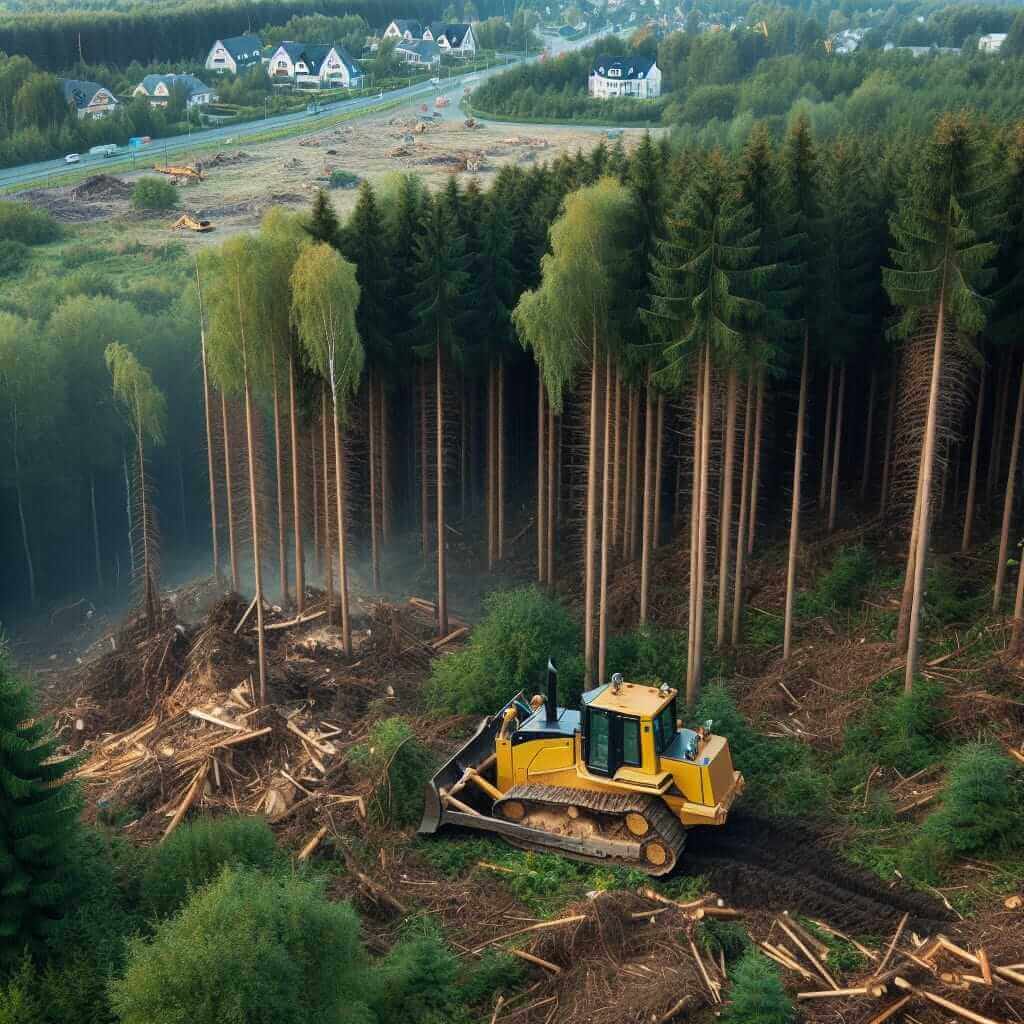Urban sprawl, a phenomenon characterized by the uncontrolled expansion of urban areas into natural habitats, has become a pressing issue in contemporary society. This rapid urbanization poses significant threats to wildlife, leading to habitat destruction, reduction in biodiversity, and disruption of ecosystems. Understanding the effects of urban sprawl on wildlife not only sharpens your general knowledge but also prepares you for relevant topics in the IELTS Writing Task 2.
Potential Essay Prompts
- “Urban sprawl has adversely affected wildlife. Discuss the problems that arise from this development and suggest possible solutions.”
- “Some people think urban sprawl is essential for economic growth, while others believe it has detrimental effects on the environment and wildlife. Discuss both views and give your opinion.”
- “As cities expand, urban sprawl encroaches on wildlife habitats. What are the primary impacts on wildlife, and how can these be mitigated?”
For this article, we will address the first prompt.
Analyzing the Essay Prompt
Prompt: Urban sprawl has adversely affected wildlife. Discuss the problems that arise from this development and suggest possible solutions.
Keywords: Urban sprawl, wildlife, problems, solutions.
To tackle this prompt, you need to:
- Describe the problems caused by urban sprawl on wildlife.
- Offer solutions to mitigate these issues.
Sample Essay
Introduction
Urban sprawl, defined as the haphazard and unplanned expansion of urban areas, poses a significant threat to wildlife. As cities grow, they devour natural habitats, leading to numerous adverse effects on wildlife. This essay will discuss the major problems resulting from urban sprawl, including habitat loss, biodiversity decline, and ecosystem disruption, and suggest viable solutions to mitigate these impacts.
Problems Caused by Urban Sprawl
Firstly, urban sprawl leads to habitat destruction. As human settlements expand, natural habitats are cleared to make way for housing, infrastructure, and agricultural activities. This process forces wildlife to migrate, often resulting in overcrowded habitats, increased competition for resources, and ultimately, a decline in wildlife populations.
Secondly, urban sprawl contributes to a reduction in biodiversity. Converting diverse ecosystems into uniform urban landscapes disrupts the delicate balance of flora and fauna. Many species are unable to adapt to these sudden changes, leading to decreased biodiversity. This loss is particularly critical for endangered species, as they face increased risks of extinction.
Lastly, ecosystem disruption is a significant problem caused by urban sprawl. Urban areas often introduce pollutants, such as chemical runoff from roads and industrial activities, into natural habitats. These pollutants can contaminate water sources and soil, negatively affecting plant and animal life. In addition, the intrusion of non-native species into new areas can further destabilize ecosystems, resulting in long-term ecological imbalances.

Solutions to Mitigate the Impacts
To address these problems, one effective solution is implementing stringent land-use planning and zoning regulations. Governments can designate protected areas where urban development is restricted, preserving critical habitats for wildlife. Additionally, promoting the development of green spaces within urban areas can provide refuge for local wildlife and help maintain biodiversity.
Another solution is fostering public awareness and education regarding the impacts of urban sprawl on wildlife. Education campaigns can help communities understand the importance of conservation and encourage more sustainable living practices. For instance, residents can be motivated to partake in urban greening initiatives, such as planting native vegetation and creating wildlife corridors.
Finally, integrating wildlife-friendly designs in urban planning can mitigate the adverse effects of urban sprawl. This includes constructing wildlife passages across roads to prevent accidental roadkills and designing buildings that minimize light and sound pollution, which can disrupt natural behaviors of nocturnal species. Such measures can create a more harmonious coexistence between urban environments and wildlife.
Conclusion
In conclusion, urban sprawl adversely affects wildlife through habitat destruction, biodiversity reduction, and ecosystem disruption. However, by implementing strict land-use policies, increasing public awareness, and incorporating wildlife-friendly designs in urban planning, society can help mitigate these impacts. It is essential to strike a balance between urban development and wildlife conservation to ensure a sustainable future for all species.
Word count: 422
Important Considerations When Writing About This Topic
- Structure: Ensure your essay has a clear introduction, body paragraphs discussing problems and solutions, and a concise conclusion.
- Cohesion and Coherence: Use linking words and phrases to connect ideas smoothly.
- Complex Sentences: Employ a variety of sentence structures to demonstrate linguistic proficiency.
- Lexical Resource: Use topic-specific vocabulary related to urban sprawl and environmental issues.
Key Vocabulary to Remember
- Habitat destruction (noun) /ˈhӕbɪtæt dɪˈstrʌkʃən/: the process by which natural habitats are rendered unable to support the species present.
- Biodiversity (noun) /ˌbaɪoʊdaɪˈvɜːrsɪti/: the variety of plant and animal life in a particular habitat.
- Ecosystem disruption (noun) /ˈiːkəʊsɪstəm dɪsˈrʌpʃən/: disturbances to the natural balance of organisms and their environments.
- Conservation (noun) /ˌkɒnsərˈveɪʃən/: the protection and preservation of the environment and wildlife.
- Sustainable (adjective) /səˈsteɪnəbl/: capable of being maintained over the long term without depleting resources.
Conclusion
Understanding the effects of urban sprawl on wildlife is crucial for addressing environmental challenges. By analyzing relevant essay prompts, structuring your responses effectively, and enriching your vocabulary, you can adeptly tackle related topics in the IELTS Writing Task 2. Practice and reflection on this theme will not only improve your writing skills but also enhance your awareness of environmental conservation issues.